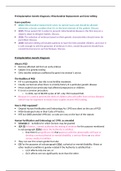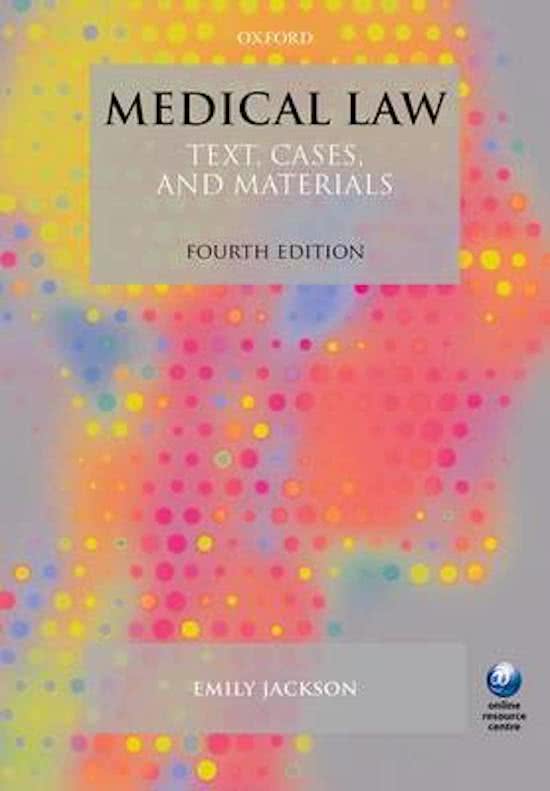Preimplantation Genetic Diagnosis, Mitochondrial Replacement and Gene-editing
Exam questions
2014: Mitochondrial replacement raises no special issues and should be allowed
whenever a doctor considers that it is in the best interests of the patient. Discuss.
2015: Three parent IVF in order to prevent mitochondrial disease is the first step on a
slippery slope to designer babies. Discuss.
2016: The selection of embryos based on their genetic characteristics should never be
permitted. Discuss.
2018: Genome editing will enable patients to have the best possible children, and once it
is safe enough to edit the genomes of embryos in vitro, would-be parents should have
unrestricted access to such techniques. Discuss.
Preimplantation Genetic Diagnosis
What is PGD
Remove affected cell from an early embryo
Subject it to genetic testing
Only transfer embryos unaffected by gene into woman’s uterus
The Realities of PGD
IVF is a prerequisite, but this is not fertility treatment.
Usually carried out when there is a family history of a particular genetic disease.
Most couples have previously had affected pregnancies or children.
It is not a common procedure:
o in 2016, out of 68,090 cycles of IVF, only 702 involved PGD.
Because it is used to prevent the birth of children who will suffer from serious diseases
(which may be expensive to treat) many couples receive NHS funding.
How is PGD regulated?
Original Human Fertilisation and Embryology Act 1990 was silent on the use of PGD
HFEA developed rules in their Code of Practice.
HFE Act 2008 amended 1990 Act, so rules are now on the face of the statute.
Human Fertilisation and Embryology act 1990, as amended
Schedule 2 – Activities for which licences may be granted
1ZA (2) A licence… cannot authorise the testing of embryos for the purpose mentioned
in sub-paragraph (1)(b) unless the Authority is satisfied…
o that there is a significant risk that a person with the abnormality will have or
develop a serious physical or mental disability, a serious illness or any other
serious medical condition.
They can use it to screen gender but also
(3) For the purposes of sub-paragraph (1)(c), a physical or mental disability, illness or
other medical condition is gender-related if the Authority is satisfied that –
o (a) it affects only one sex, or
o (b) it affects one sex significantly more than the other.
, Snelling and Gavaghan are critical of the HFEA’s 2014 decision to refuse an application
to carry out sex selection in order to avoid inheritance of autism spectrum disorder
(ASD) in a family with two ‘severely affected’ male children’.
HFEA cited evidence from peer reviewers that PGD could not guarantee female child
would not be free from ASD.
o Snelling and Gavaghan: Act doesn’t confine sex selection to X-linked disorders
but also to conditions that affect one sex ‘significantly more’ than the other
Could’ve been to avoid public criticism as avoiding ASD is closer to social sex selection or
because HFEA did not want to be involved in facilitating the conception and birth if child
which may nevertheless be born with ASD.
What constitutes ‘serious’?
Concerns about allowing PGD for trivial things would lead to slippery slope and designer
babies.
Who should decide what is serious: the parents or the doctor?
Different ways that severity of a disability could be understood
o The effect of it on the child’s well-being
o The extent to which the person deviates from normal human functioning
o The care burden it places on the parents
o Down syndrome imposes high care burden, there is deviation from normal
human functioning but it is not necessarily associated with child’s quality of life.
Is seriousness an objective fact or does it depend on the families’ experiences of the
condition, and thus vary?
o Does it depend on families own experience of the illness? Can the standard vary?
o Soren Holm: Seriousness varies according to the precise social context of each
affected person so same condition can impact person very differently.
o Statue seems to assume objective assessment of seriousness is possible whereas
different people judge seriousness differently.
Code of practice acknowledges this and suggests family’s particular circumstance and
their subjective views of condition are relevant.
HFEA Code of Practice (9th edition)
10.5 When deciding if it is appropriate to provide PGD in particular cases, the centre
should consider the circumstances of those seeking treatment rather than the particular
heritable condition.
10.6 The perception of the level of risk for those seeking treatment will also be an
important factor for the centre to consider…
10.9 The centre should consider the following factors when deciding if PGD is
appropriate in particular cases:
o (a) The views of the people seeking treatment in relation to the condition to be
avoided, including their previous reproductive experience
o (b) The likely degree of suffering associated with the condition
o (c) The availability of effective therapy, now and in the future
o (d) The speed of degeneration in progressive disorders
o (e) The extent of any intellectual impairment
o (f) The social support available, and
, o (g) The family circumstances of the people seeking treatment.
Rosman Scott did empirical research and found parent’s opinions had considerable
weight in the decision.
Are some disabilities social, not medical?
People disabled in large part because of society’s attitude towards them, and its failure
to adapt properly to their needs, rather than the physical or mental impairment itself.
o Jonathan Glover: E.g. achondroplasia – Dwarfism, severely restricted height. This
can be fairly easily overcome as you can have things tailored for you e.g. needing
a stool etc.
o But the disability/serious disadvantage comes from other people responding
differently to them.
o “I’m just small. I can do everything everyone else can do.” (Ellie Simmonds,
British Paralympians medal winner)
All the UN signatory have signed up to addressing the exacerbation of disabilities.
Jackie Leach Scully: The line between normal and special vulnerability is not natural but
established through political decisions about the limits to normative dependencies.
o So, permitted dependencies are naturalised and normalised. They are met and
supported without question, and in doing so the vocabulary of vulnerability is
never used.
o Other people, and groups, will have needs that fall outside the normative limit.
These are non-permitted dependencies. They are figured as abnormal.
o It may not be possible to eliminate all impairment-related inherent
vulnerabilities, but it can be argued that societies and states have a moral
responsibility to do whatever can reasonably be done to minimise impact of
inherent vulnerabilities on lives of disabled people.
There is also ascribed global vulnerability. By this I mean the tendency on the part of
the nondisabled to extrapolate a genuine vulnerability in one area of a disabled person’s
life to a globally increased vulnerability stretching over the entirety of that person’s life.
o Ascribing global vulnerability is especially pernicious because of the insidious
damage it does to other people’s attitudes toward disabled people’s own agency.
o Vulnerability is strongly associated with qualities such as immaturity, weakness,
helplessness, passivity, victimhood, and humiliation.
Availability on the NHS
The NHS Commissioning Board will commission three cycles of Preimplantation Genetic
Diagnosis (PGD) for couples who have, or are carriers of, a proven genetic disorder and
who wish to avoid the birth of an affected child, in accordance with the criteria outlined
in this document.
Mandatory criteria for the couple
o The couple should be at risk of having a child with a serious genetic condition.
o The couple should have been referred to the PGD provider by an NHS Clinical
Genetics Service
o The risk of conceiving a pregnancy affected by a serious genetic condition should
be 10% or more





